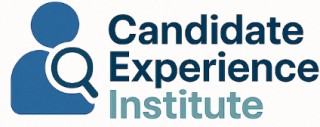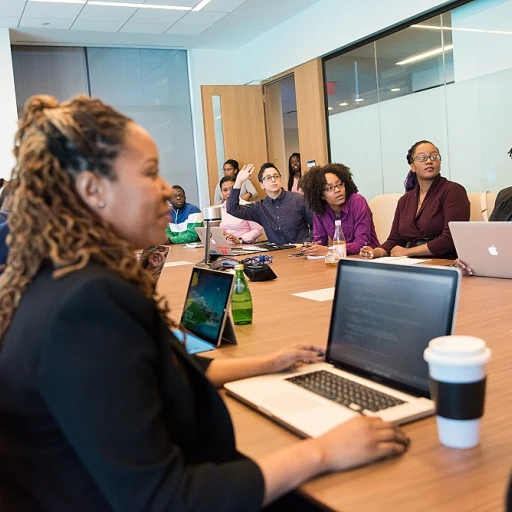
Defining Backfilling in Recruitment
Overview of Backfilling in Recruitment Practices
Backfilling is a term frequently used in recruitment to describe a company's process of filling a vacant position that was previously held by another employee. This concept often comes into play when the original employee has moved up within the organization, left their job, or gone on extended leave. In essence, backfill positions are intended to ensure the smooth continuity of business operations without major interruptions. Companies often utilize a backfill strategy as part of their succession planning process. This not only enhances the existing team dynamics but also aligns with the company's long-term talent management goals. Engaging current employees in cross training can help ease the transition, as they are already familiar with the organization's processes and culture, making them ideal candidates for a backfilling position. A well-structured backfill strategy can significantly impact the recruitment process, enhancing the overall candidate experience by conveying a stable and supportive work environment. Organizations that implement the best practices in backfilling pave the way for not only attracting top talent but also retaining their best employees. This approach not only aids in the short term but strengthens the company’s position in the competitive job market over time. For more insights on how to attract top talent and improve employer branding, consider exploring our resources on crafting effective employer branding strategies. This can be a pivotal step in your recruitment endeavors. Taking time to understand the role of backfilling in your specific organizational context is crucial for maximizing its benefits and ensuring your team remains productive and motivated throughout the hiring and transition processes.The Role of Backfilling in Candidate Experience
The Impact of Backfilling on Candidate Experience
In the recruitment process, the role of backfilling is significant when it comes to shaping the candidate experience. Backfilling essentially refers to the strategic approach organizations take when they need to fill a vacant position quickly while maintaining workflow continuity. A positive candidate experience is crucial even during backfilling because organizations rely on attracting top talent for long-term success. Here are some aspects that highlight the importance of a well-executed backfill strategy:- Timely Communication: It is imperative for management to ensure transparent and timely communication with potential candidates. Informing them promptly about the backfilling position sets the tone for expectations and clarifies the hiring process.
- Well-Defined Roles: Clearly defined job roles and responsibilities help prevent confusion, both among the current employees and those being considered for the position. By understanding what the backfill entails, candidates can better assess how their skills align with the job requirements.
- Succession Planning: Implementing effective succession planning enhances the candidate experience by demonstrating the company's commitment to career growth and development. Candidates appreciate knowing there is a plan for smooth transitions and long-term career possibilities.
- Inclusive Culture: When filling backfill positions, promoting an inclusive culture is pivotal. It reassures candidates about the company's values and fosters a sense of belonging even before they join the team.
Reasons Companies Opt for Backfilling
Why Organizations Resort to Backfilling
In the dynamic world of recruitment, companies often find themselves needing to explore career opportunities that accommodate both present and future workforce needs. A critical component in this recruitment process is backfilling, which serves multiple organizational needs.
- Maintaining Continuity: When a top talent leaves a position, it's essential to fill the role swiftly to maintain productivity. A vacant position can disrupt team dynamics and workflow, impacting the overall effectiveness of the organization.
- Succession Planning: Companies often use backfilling as a part of their succession planning strategies. This involves identifying future leaders from within the team, thus providing current employees with growth opportunities.
- Short-term Solutions: Sometimes, the need to backfill positions arises due to temporary absences such as maternity leave. Having a short-term plan ensures that work continues without significant interruptions.
- Retaining Best Talent: Backfilling allows organizations to retain their best employees by promoting them to vacant positions as they arise or cross-training them into new roles within the company.
- Adapting to Change: As companies evolve, so do their employee needs. Backfilling helps organizations remain agile, adapting quickly to changes in their workforce with minimal disruption.
These reasons reflect the significant role that backfilling plays not just in sustaining operations but also in contributing to an employee's career growth, ultimately enhancing the overall candidate experience.
Strategies for Effective Backfilling
Optimizing Backfilling Tactics
Effective backfilling requires more than just filling a vacancy; it demands a strategic approach to ensure continuity and productivity. Here are several strategies that organizations can utilize to improve their backfilling processes:- Succession Planning: A strong succession plan is crucial for a seamless transition when an employee leaves. By identifying and grooming current employees who can take on additional responsibilities or step into new roles, organizations can proactively address potential gaps in their teams.
- Cross-Training: Encouraging cross-training among team members not only prepares employees to handle diverse tasks but also creates a versatile workforce. This reduces dependency on a single employee and aids in covering the duties of a vacant position more effectively.
- Leveraging Management Software: Utilizing advanced management software can streamline the backfilling process. These tools help in task delegation, monitoring progress, and maintaining communication across teams, ensuring that no responsibilities fall through the cracks when a backfilling position occurs.
- Engaging Top Talent: Organizations should always be on the lookout for top talent, even when there isn't an immediate vacancy. Building a talent pool ahead of time allows companies to act quickly and hire the best candidates when a position opens up, mitigating the impact of the hiring process delay.
- Clear Job Descriptions: For a successful backfill, it's critical to have accurate and detailed job descriptions. Outlining the specific roles and responsibilities ensures that new hires are well-aware of their duties from day one, aligning the company's expectations with the candidate's understanding of their new position.
- Long-term vs. Short-term Needs: Distinguishing between long-term and short-term backfill positions can aid in selecting the right hiring approach. For instance, temporary workers can effectively fill in for short-term needs, while permanent positions might benefit more from the investment in recruiting the best employee for the long term.
Challenges in Backfilling Positions
{Tackling the Complexities of Backfilling
Backfilling positions might seem straightforward but often presents several challenges that organizations need to navigate effectively. Here are some of the key difficulties encountered in the process:- Timing and Coordination: The recruitment process and backfilling activities need to be meticulously timed. A delay in identifying the right candidate for a backfill position can lead to longer periods of vacancy, disrupting the team's workflow and hampering productivity. Aligning the recruitment process with the availability of top talent requires strategic timing and planning.
- Retention of Knowledge: A significant challenge is the potential loss of knowledge and skills when an original employee vacates the position. Ensuring the transfer of crucial institutional knowledge to the new hire or team members is vital, often necessitating thorough cross training and effective succession planning.
- Impact on Current Employees: Relying heavily on current employees to handle additional responsibilities in the short term while a backfill position is being processed can lead to burnout and decreased morale if not managed carefully. Employers need to support their teams through proper resource management and incentive programs.
- Alignment with Organizational Goals: It's crucial for businesses to ensure that the backfilling strategy aligns with their long-term organizational goals. Filling positions with the wrong hires can affect internal team dynamics and the company's future growth trajectory.
- Technological Implementation: Leveraging management software effectively can aid in streamlining the backfilling process. However, integrating new systems presents its own set of challenges, including employee training and adaptation to new tools, which should not be overlooked.
Future Trends in Backfilling and Recruitment
Evolving Trends in Backfilling Strategies
In a rapidly shifting landscape of work, the concept of backfilling positions is undergoing transformations driven by technology, changing employee expectations, and new management practices.- Technology Integration: Modern management software enhances the backfilling process by providing insights into the vacancies, current employee skill sets, and workforce needs. These tools are instrumental in streamlining the recruitment process for the backfill position, ensuring the top talent is swiftly identified and onboarded.
- Emphasis on Cross-Training: Organizations are increasingly prioritizing cross-training their team members. This strategy not only prepares employees for unexpected vacancies but also boosts the employee's role versatility, equipping them for long-term career growth within the company.
- Focus on Succession Planning: While backfilling has traditionally addressed short-term solutions, there is an emerging emphasis on aligning these strategies with the organization’s succession planning. A carefully curated backfill strategy can better prepare companies for future leadership transitions.
- Embracing Best Practices: Companies are adopting best practices, such as maintaining a pipeline of potential candidates and fostering a strong employer brand, to enhance their backfilling strategy. This ensures the process is both efficient and less disruptive to the ongoing business operations.













